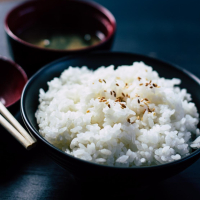
Full review here
Photo by Mgg Vitchakorn on Unsplash
Key messages
Fortification of rice with iron alone or in combination with other micronutrients may make little or no difference in the risk of having anaemia but probably reduces the risk of iron deficiency and increases mean haemoglobin concentrations in population aged two years or above. If vitamin A is added, it may reduce the risk of having vitamin A deficiency and when folic acid is added, fortified rice may slightly increase serum folate concentrations.
What was studied in this review?
Micronutrient malnutrition compromises the health and well‐being of populations in many low‐ and middle‐income countries. Fortification is the addition of nutrients to foods to improve their nutritional quality. Rice is widely consumed as a staple food and is suitable for adopting as a food vehicle for fortification. This review addresses the benefits and harms of rice fortification with vitamins and minerals on micronutrient status along with health‐related outcomes, among participants aged two years and above, in addition to outcomes relevant to deficiencies in iron, vitamin A, zinc and folate.
What are the main results of the review?
We identified 17 studies (involving 10,483 participants) from Bangladesh, Brazil, Burundi, Cambodia, India, Indonesia, Mexico, Philippines, Thailand and USA. Twelve were randomised studies (2238 participants); 10 involved children, and two studies involved non‐pregnant non‐lactating women. In addition to iron, some studies had vitamin A, zinc or folic acid as fortifying agents, alone or in combination. Five non‐randomised studies (8245 participants), were assessed to augment the information on implementation and impact of fortification. The included studies were funded by government, private and non‐governmental organisations, along with other academic institutions. The source of funding does not appear to have altered the results.
We are uncertain about whether rice fortification with iron and other micronutrients reduces the risk of having anaemia although this intervention may increase mean haemoglobin concentrations (a biomarker of anaemia). We are uncertain if fortification of rice with iron alone or in combination with other micronutrients as compared to without any fortification, reduces the risk of iron deficiency.
Furthermore, consumption of vitamin A in the fortified rice, may make little difference on haemoglobin and serum retinol concentrations (a biomarker of vitamin A nutrition). We do not know whether fortification of rice has any adverse effects, in the mid‐ or long‐term, as the evidence was very limited. We found that the overall certainty of the evidence ranged from very low to low. Also, all studies used iron to fortify rice, so the effect of isolated nutrients may be hidden. There was no significant publication bias across the studies.
How up‐to‐date is this review?
The review authors searched for studies that had been published up to 10 December 2018.
